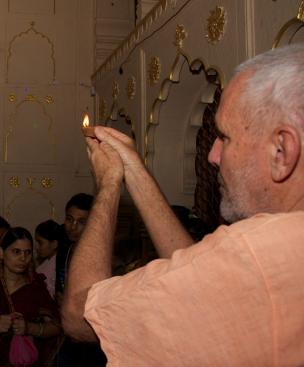Mayapur, Navadvipa and Jagannatha Puri encompass the principle places of Lord Chaitanya’s appearance and pastimes. Vrindavan shares the distinction with Mayapur-dhama as the most Holy places in the world for all Gaudiya Vaishnavas.
Our beloved Lord Krishna enjoyed many wonderful pastimes in Vraja-dhama (the entire greater Vrindavan area), from his appearance in Mathura to His many inspiring lilas in virtually all of Vraja — transforming every inch into Krishna’s penultimate spiritual realm.
Love in Separation
For those absorbed in their sadhana bhakti, always meditating on the Lord’s inspiring pastimes, every step in Vraja enthuses a deep mood of separation from the Lord — the exaulted rasa of Vipralambha.
Here in the heart of Vraja, Lord Krishna experienced his most intimate, confidential and meaningful pastimes — always inspiring and coaxing the deep love of His devotees to greater and all encompassing heights. This highest form of love of God manifests in a bittersweet intense manner — inspiring love so strong that one cannot tolerate the absence of Krishna — resulting in a tempestuous longing for the Lords association, which is so all-consuming and overpowering that one feels a deep pain. The bittersweet pain of vipralambha-bhava devours us — separation so painful, yet also giving the most intense pleasure imaginable.
Although any description pales in comparison to the real thing, we may portray its nature as disconcertingly painful while simultaneously giving the ultimate pleasure. An imperfect comparison might be to a spicy subji or chutney, which is irrestably tasty and unable to resist, while also so spicy as to burn the senses — difficult to experience and simultaneously impossible to refuse such feelings of irresistable longing
Our acaryas exclaim that this vipralambha-bhava produces the highest devotional sentiments possilble — it is the goal of all Gaudiya Vaishnavas to enter eternally into this mood. For in Goloka-Vrindavan, the highest spiritual abode — the perfect, permanent, personal residence of Lord Krishna, all its residents are so much absorbed in their intense love for Krishna that they cannot tolerate separation from Him for a moment.
Uddhava Astonished
Here on earth, where Krsna enacted a reflection of his Goloka pastimes, after Krsna moved to Dwaraka for an extended period, all the residents of Vrindavan, especially the gopis and gopas underwent intense vipralambha. Uddhava was sent by Krsna from Dwaraka to Vrindavan to check on its residents, Uddhava was astonished to see this ultimate expression of vipralambha by the Vrajabhasis. They were so overcome by their intense feelings of separation that Uddhava felt as if they had gone mad. They were acting strangely due to their separation and could not function properly.
The pain, like strong spices, makes the ecstacy of the separation more relishable by contrast — this is our ultimate goal of life. Shri Chaitanya Mahaprabhu (the combined form of both Radha and Krsna) revealed his own feelings of separation from Krsna in the mood of Srimati Radharani, even though He is the combined form of them both together.
Siksastakam
These sentiments are expressed nicely by Shri Chaitanya Mahaprabhu in the seventh verse of His Siksastakam:
yugāyitaṁ nimeṣeṇacakṣuṣā prāvṛṣāyitam
śūnyāyitaṁ jagat sarvaṁ govinda-viraheṇa me
“O Govinda! Feeling Your separation I am considering a moment twelve years or more, and tears are flowing from my eyes like torrents of rain. I am feeling all vacant in the world, in the absence of You.”
A treatise on the Siksastakam of Sri Chaitanya Mahaprabhu and the commentary of Srila Sridhar Deva Goswami Maharaja is included in his book, “The Golden Volcano of Divine Love,” available online. Here Sri Chaitanya Mahaprabhu portrays the entire ontology of the chanting of the Holy Name, the process of chanting, requirements for properly chanting and the results of chanting. An overview is given here:
https://gosai.com/writings/the-greatest-gift-part-1 Krishna Talk 230
https://gosai.com/writings/the-greatest-gift-part-2 Krishna Talk 232
The Eyes To See The Dhama
All the topmost devotees and associates of Lord Krishna relish such feelings. Uddhava expressed the sentiment that he wanted to be born as a creeper or grass in Vraja so that he could feel the footsteps of Radha and Krishna during their many joyous pastimes there. Uddhava wanted to directly experience the incredible Madhurya-lila sentiments expressed by Radha and Krishna as They romped about Vraja-dham stepping upon Uddhava himself as a Vraja creeper.
During our many years in Vrindavan we were fortunate to experience its glories in many forms and experiences. First, by visiting the numerous Holy sites of Krishna's incredible pastimes and those of His most exalted devotees — for here in these holiest of holy places so many great souls are either prominent members of our parampara or actively participating directly or indirectly in these pastimes. In visiting these places the most fortunate can connect with the very essence of the spiritual rasas exhibited by these great souls — almost as associates of Radha-Krishna.
Once of a morning walk, one of Srila Prabhupada’s disciples commented that the surrounding area was just like California. Prabhupada’s reply was, “Yes, whereever you are it is California.” To which the disciple replied, “But wherever you are Prabhupada, it is Vrindavan. You are always in Vrindavan.” Prabhupada happily agreed with enthusiasm, “Yes!” These mimic the deep feelings of Shri Chaitanya Mahaprabhu, “Mora mana Vrindavan.” That My mind is Vrindavan — I see Vrindavan everywhere.
Each Holy site provides an opportunity to enter deeply into such rasas. We should pray sincerely to these spiritually superior personalities, whose mercy and kindness are more accessible here on their home ground. Advanced devotees are blessed that they may more easily enter into and become internally absorbed in these rasas, thereby drawing them ever closer to Lord Krishna. The price for admittance to the infinitely wonderful and perfect platform of pure Krishna worship is to surrender in deep devotion with eagerness, purity and sincerity — all qualities available and obtainable by executing sincere earnest devotional service without any motives — akiñcanā in sanskrit.
Aspirations
Srimad Bhagavatam 5.18.12 guarantees this — that one will automatically develop all good qualities when executing devotional service in this manner. Our aspiration must be to become a true devotee of pure heart.
yasyāsti bhaktir bhagavaty akiñcanā sarvair guṇais tatra samāsate surāḥ
harāv abhaktasya kuto mahad-guṇā manorathenāsati dhāvato bahiḥ
“All exalted qualities become manifest in the body of one who has developed unalloyed devotion for the Supreme Personality. Conversely, one devoid of devotional service and engaged in material activities has no good qualities.”
Our beloved guru, Srila A. C. Bhaktivedanta Swami Prabhupada was fond of quoting Rupa Goswami’s recommendation in regards to the necessity of developing eagerness.
Intense Eagerness
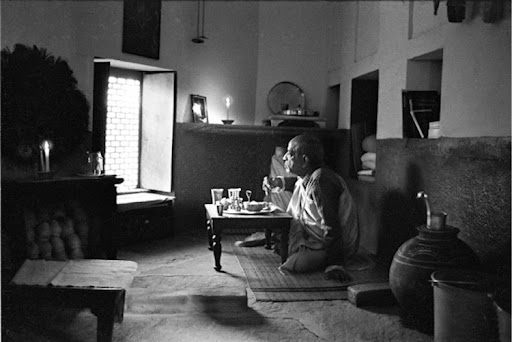
Tatra laulyam ekalaṁ mūlyam. One must learn to cry for Krishna — one must embrace, even cultivate an intense eagerness for the Lord — lalyam lālasāmayī.
Prabhupada also writes in his Nectar of Devotion: “To achieve Krishna consciousness perfectly, this ecstatic eagerness or greediness, to serve Krishna, that is the only price to achieve success in devotional service.” He also writes, “This submission with transcendental desire, or lālasāmayī vijñapti, is the highest perfectional stage of spiritual realization.”
Following this thread of absolute focus and strong dedication, we find in Srinivasa Acarya’s Sad Goswami Astaka, nidrahara-viharakadi-vijitau catyanta-dianau ca yau, the Six Goswami’s of Vrindavan were so absorbed internally in their service of the Lord that they literally forgot to eat and sleep. While this is indeed a high standard set by them, we should try to emulate their mood and fixed determination — ekeha kuru-nandana.
The Goswami’s overwhelming mood of lalyam and vipralambha is revealed in the final verse of this Astakam:
he radhe vraja-devike ca lalite he nanda-suno kutah
sri-govardhana-kalpa-padapa-tale kalindi-vane kutah
ghoshantav iti sarvato vraja-pure khedair maha-vihvalau
vande rupa-sanatanau raghu-yugau sri-jiva-gopalakau
“I offer my respectful obeisances unto the six Gosvamis, who were chanting very loudly everywhere in Vrindavana, shouting, "Queen of Vrindavana, Radharani! O Lalita! O son of Nanda Maharaja! Where are you all now? Are you just on the hill of Govardhana, or are you under the trees on the bank of the Yamuna? Where are you?" These were their moods in executing Krishna consciousness.”
Significance of Kartika
Srila Prabhupada, recognizing the significance of the Kartika festival, promoted it with his disciples, arranging yearly Kartika festivals and instructing every disciple possible to regularly attend. Entire airplanes were engaged in ferrying hundreds of devotees from all areas of the world to attend, resulting in thousands of disciples experiencing and relishing this experience yearly. The fever of Krishna-bhakti caught on and this festival is still a prominent part of most Krishna-bhaktas’ lives.
Out of all our personal pastimes in Vraja, those during the Kartika period were always the most memorable and potent spiritual experiences. Kartika is a time to experience Krishna deeply and enter into the innermost aspects of Krishna bhakti, tinged with the true mood of their residents — this is the Vraja-rasa. For, Kartika celebrates Krishna's childhood pastimes as Damodar and in particular His Damodar lila is highlighted daily in the singing of the Damodarastakam. During this festival devotees gather daily to sing it. This tradition has long been one of our favorite times of the year for it seamlessly draws us further into our devotion to Krishna.
Krishna's Damodar lila (early life as a child in Vrindavan) portrayed in the Damodarastakam during themonth long Kartika festival, illustrates that Krishna reveals Himself to those with devotional love. Mother Yasoda’s attempts to bind Krishna failed, until, seeing her earnestness, He allowed her to do so. This further reveals Krishna's omnipotency — only love can conquer Him.
Kartika in the Vraja-dhama is a very special time for its residents, drawing out their deep devotion and excitement in anticipation of the daily offerings of lamps and the special darshans of its Deities.
Although we worshipped our own merciful Shri Shri Gaura Radha Madhava Deities in our Rupanuga Bhajan Ashram, we often went out for the darshan of the Deities installed by the Six Goswamis in Vrindavan — more so during the Kartika festival time. Srila Prabhupada stated that, “You won’t find Krishna in Loi Bazaar (Vrindavan marketplace).”
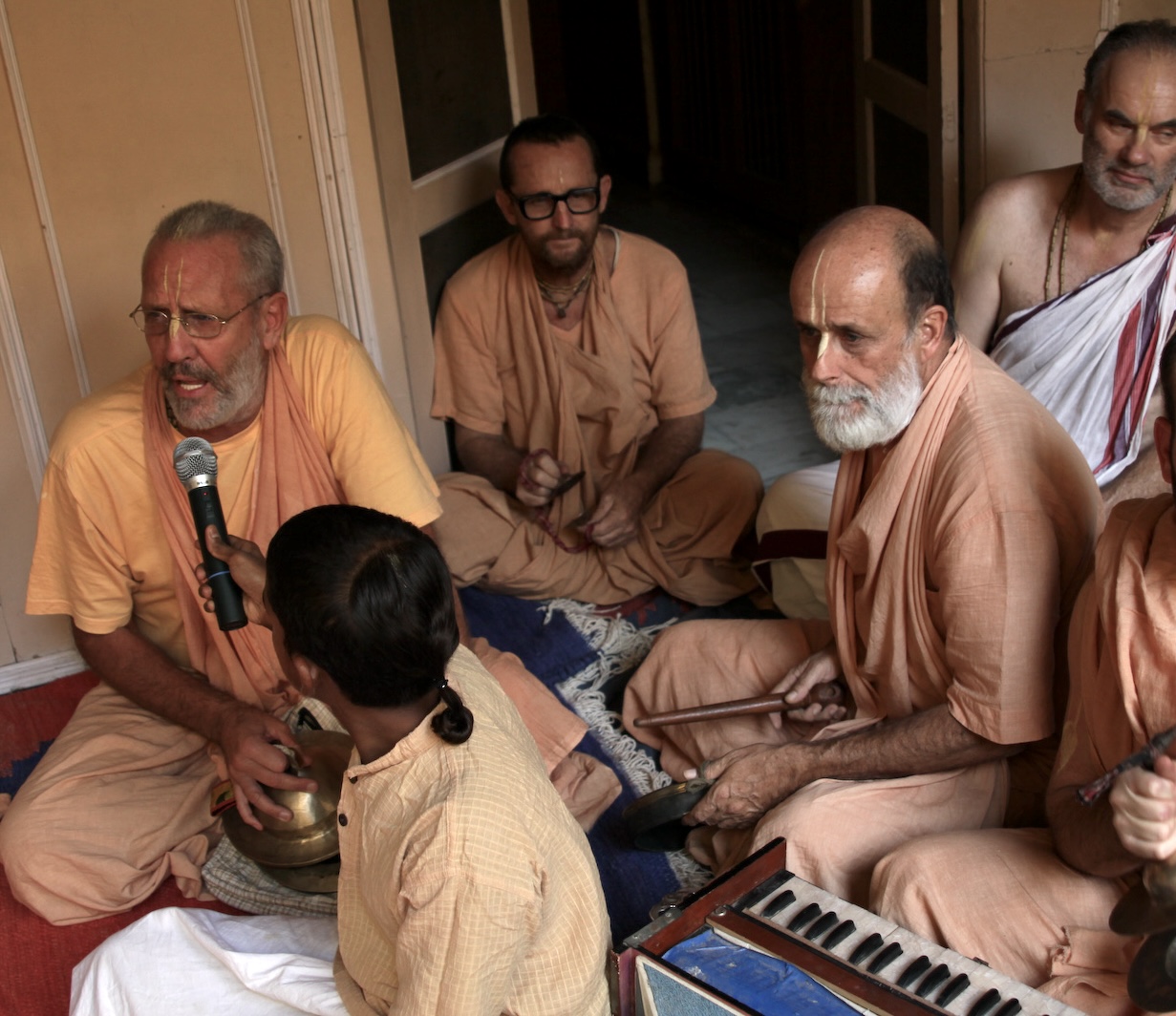
An Eye of Devotion
To really understand Vraja, to truly enter into the deep spiritual aspect of Vrindavan, one must see it with the eye of devotion. The visual image neophyte devotees or first time visitors see of Vrindavan is that of a very dirty medieval town with little appeal. The actual attraction of Vrindavan is deeply spiritual so without real devotion one cannot truly understand it. Normal eyes cannot see behind the curtain of maya to understand Vrindavan’s appeal — its true spiritual appeal. The spiritual realm is like a parallel world overlapping the mundane realm but invisible except to those we can see with an eye of devotion.
As we observe the Kartika festival deep in South India, in Govindaji Gardens, far from Vraja-dham, our heart and mind often revisit our many previous experiences there, fondly etched in our memory. I often meditate on the Deities, temples and activities in Vrindavan as we sing the Damodarastakam. Our previous Rupanuga Bhajan Ashram was located just off the Mathura-Vrindavan Road near the Govindaji Temple built by Srila Rupa Goswami, our sambandha acarya — who wrote many wonderful books detailing our entire process of Krishna-bhakti.
Kartika Darshans
Our darshans usually started with the Govindaji temple, not the original as it was mostly destroyed — but the New Radha-Govindaji Temple behind the original. The original Govindaji Temple was established by Srila Rupa Goswami our abhidheya-acarya or one who reveals how to execute devotional service. During our approach for darshan some years ago I observed an older, frail, poor woman of great devotion approaching the temple doors eagerly. She wore tattered thin clothes, shivering with the cold, obviously poor, yet extremely enthusiatic for darshan of the Deities. She had no shoes so had wrapped her feet in newspapers, clutching a small box of oil wicks and other items for offering, with a few coins wrapped in the end of her sari. The doorway and pilgrims partially blocked her entrance but her strong enthusiasm had her nearly climbing the backs of these pilgrims. I marvelled at her utter devotion in the face of her extreme poverty, sparce living and undoubtably austere situation. Her excessive desire for a vision of the Deities reminded me of the Chaitanya Charitamrita pastime of a similarly enthusiastic pilgrim climbing on the back of Shri Chaitanya Mahaprabhu in Puri for a glimpse of Lord Jagannatha.
From there we would pass near Loi Bazaar and continue to the Radha Gopinatha temple for darshan and then Radha Raman and Radha Gokulanda. My favorite was the Radha Gokulanda temple with its Deities and Samadhis of Lokanatha Goswami, Visvanatha Chakravarti Thakur, Narottama Dasa Thakur, Baladeva Vidyabhusana — their Deities on the altar along with the Govardhan Sila given to Raghunatha Dasa Goswami by Shri Chaitanya Mahaprabhu. Raghunatha Dasa Goswami, our Prayojana-acarya, reveals to us the ultimate goals of our life of devotion. We often went there for the evening arotika led at that time by an elderly Damodar Goswami, a kindly gentleman who was very likeable and often exclaimed how lucky I was to be there in Vrindavan during Kartika.
Continuing from here, it is a short walk up the parikrama trail (opposite direction to circumambulating Vrindavan) to the Radha Madan Mohan Temple established by Sanatana Goswami, our sambandha-acarya, who shows us the process of understanding our relationship with Lord Krishna.
Radha Raman Alankar & Unique History
The nearby Radha Raman Temple is known for its amazing alankar (Deity worship), usually having some musical arrangement and extensive altar decorations. Two of its Goswamis, Padmanabha Goswami and his brother Padmalochan Goswami always were attentive to Narasingha Maharaja and myself when visiting. In our earliest years visiting Vrindavan prior to living permanently there, Narasingha Maharaja and I would often go for darshan at the Radha Raman temple. Narasingha Maharaja very much liked the devotional mood there. During that time we became friends with the father Vishvambhara Goswami, whose father had been close friends with Srila Bhaktisiddhanta Saraswati Thakura, our param guru. He invited us for prasadam in his home many times and enthralled us with pictures and stories of past Deity arrangements and festivals. He showed us pictures from an album of Radharamanji’s various elaborate alankar, offering fascinating descriptions of events occurring during the British Raja — once when the altar was decorated with a flower ship with Radharamanji in the pilot house and the words, “God save the Queen,” across the ship, along with numerous other lavish arrangements. In later years we also took prasadam in the same home with his sons Padmanabha and Padmalochan Goswamis.
They told us how their grandfather had become strong friends with Saraswati Thakura partially by his being the only Goswami in Vrindavan with the courage to invite the sankirtan party of our param guru, Srila Bhaktisiddhanta into the Radha Raman temple. All other temples closed their doors to his party in protest of his sastric policy of initiating non-caste, non-brahman born devotees into the brahminical order. This is very notable as Saraswati Thakur, a highly elevated devotee maintained friendships with only very advanced devotees. His bold preaching often faced strong resistance — a sign that one’s preaching is effective, for such effective preaching polarizes people and they either love you or hate you. The most fortunate are attracted — the desired effect.
Radha Damodar Mandir
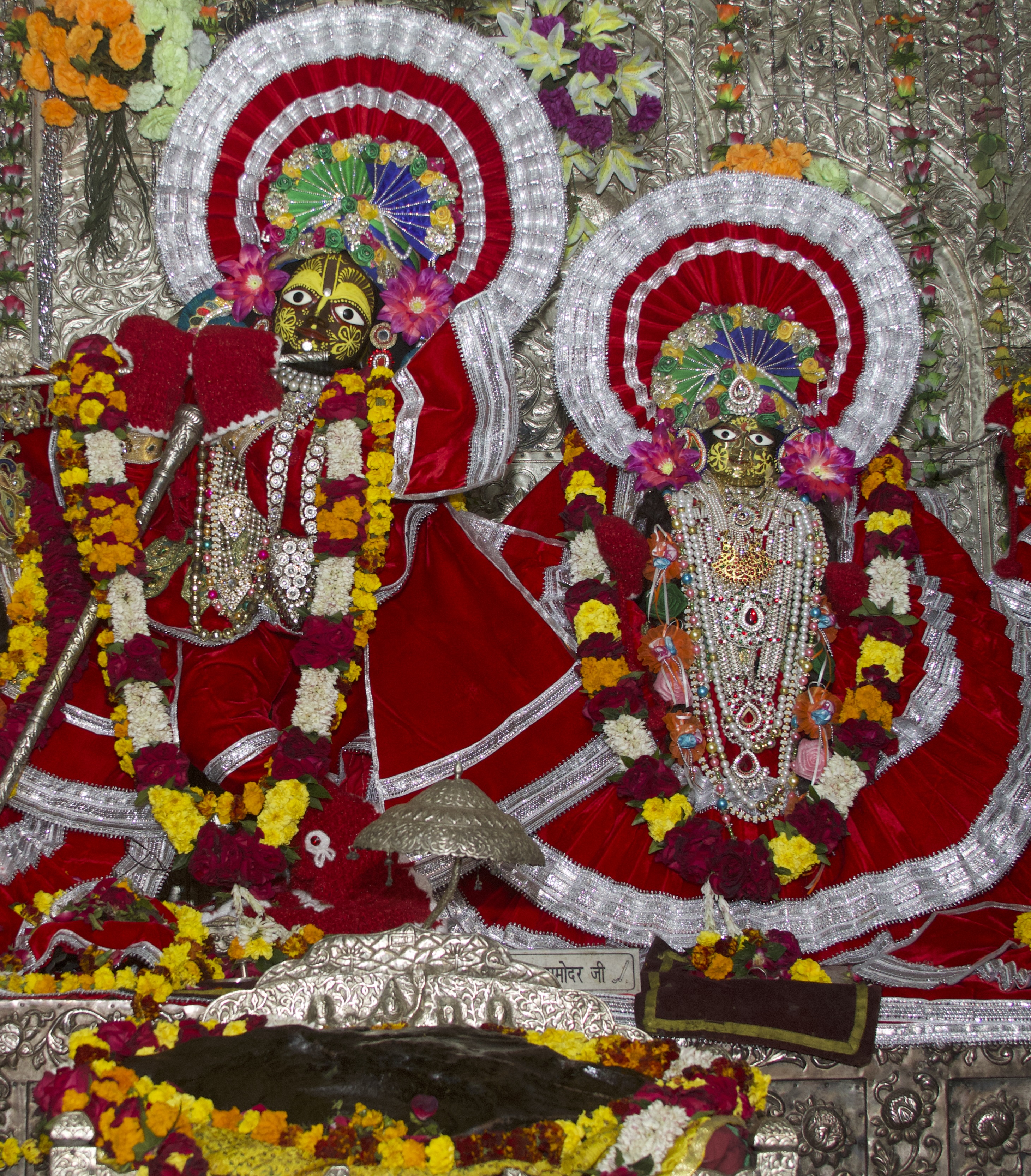
From the Radha Raman temple we would walk down various streets twisting and turning, passing the Mirabhai temple and going to the Radha Damodar temple, situated in the rasa-stali, the area of Krishna's Rasa-lila and also Krishna's epic pastime of massaging the feet of Srimati Radharani. Here in this most holy place, the bhajan kutir of our Guru Maharaja, Srila A C Bhaktivedanta Swami Prabhupada is situated, as well as the samadhi”s of Srila Rupa Goswami, Srila Jiva Goswami, Krishnadasa Kaviraja Goswami and many other stalwart devotees. Also, there are puspa samadhis of Srila Bhaktisiddhanta Saraswati Thakura Prabhupada, Srila Sridhara Deva Goswami and Srila Bhakti Promode Goswami and of our dear godbrother Sripada Narasingha Maharaja.
For Prabhupada, his Bhajan Kutir includes a kitchen and a room where he spend a number of years preparing for his successful preaching mission. From his kitchen window he would view the samadhi of Srila Rupa Goswami, and contemplate his quest, further inspired by the dedicated lives of Srila Rupa Goswami, Srila Jiva Goswami, Krishnadasa Kaviraja Goswami and so many other great predecessor acaryas associated with the Radha Damodar temple. Here, Srila Prabhupada spent years absorbed in studying our Gaudiya Vaishnava scriptures, writing and publishing books, starting his Back to Godhead magazine, living humbly in the very heart of Krishna's life and pastimes, depending on the kindness of others.
Narasingha Maharaja has a long history with the Radha Damodar Mandir, originally arranging and purchasing most of the items for Srila Prabhupada’s rooms near the end of Srila Prabhupada’s manifest pastimes. He found a manuscript of Srila Prabhupada’s original writings from which he published the book, “In Search of the Ultimate Goal of Life,” written by Prabhupada in 1959 just after taking sannyasa, prior to his Jaladhuta sea voyage to New York.
Rasa-raja Mahabhava Manifested
The next darshan is just up the street from Radha Damodar at the Radha Shyamasundar Temple of Shyamananda Prabhu (formerly Dukhi Krishnadasa). He was named Shyamananda by Sri Jiva Goswami after Shyamananda’s great fortune of having darshan with Srimati Radharani Herself.
On the way, we would often visit the nearby Imli Tala Gaudiya Matha temple founded by Srila Bhaktisiddhanta Saraswati Thakura and home of the important Imlitala tree. In 1515 Shri Chaitanya daily sat under this tree and meditated on His previous pastimes as Lord Krishna. Here, Shri Chaitanya Mahaprabhu, while absorbed deeply in the sweetness of Rādhikā’s love in the core of His heart, entered into rādhikātma-bhāva or empathic union with Her. That is, He realized and revealed his true nature as Radha and Krishna combined:
rasa-raja mahabhava-dui eka rupa
“Lord Sri Krishna is the reservoir of all pleasure, and Srimati Radharani is the personification of ecstatic love of Godhead. These two forms have combined as one in Sri Caitanya Mahaprabhu. (Cc, Madhya-lila 8.282)
Śrīla Bhakti Rakṣaka Śrīdhara Dev-Gosvāmī Mahārāja composed a beautiful Sanskrit poem on Imlitalā:
tintiḍī-talastha-yāmunormmi-bhāvanāplutaṁ
nirjanaika-rādhikātma-bhāva-vaibhavāvṛtam
śyāma-rādhikāpta-gaura-tattva-bhittikākaraṁ
prema-dhāma-devam eva naumi gaura-sundaram
“When Śrī Caitanya Mahāprabhu was sitting in solitude under the imli tree and seeing the dancing waves of the Yamunā, He remembered His water-sporting pastimes with the gopīs during His previous Avatāra as Śrī Kṛṣṇa. Embracing the sweetness of Rādhikā’s love in the core of His heart, He entered into rādhikātma-bhāva or empathic union with Her. He thus fulfilled His three internal desires and His heart was completely captured by Rādhārāṇī. Imlitalā is the place of origin of gaura-tattva, for it was here where in Dvāpara-yuga, Śyāmasundara became fully absorbed in the devotional mood of Śrīmatī Rādhārāṇī and became Gaurasundara. I offer my obeisance to that Lord Gaurasundara, who eternally resides in Imlitalā, and who is the abode of prema.” – Śrī-Śrī Premadhāma-Deva-Stotram, Verse 42.
Continuing from here, it is a short walk up the parikrama trail (opposite direction to circumambulating Vrindavan) to the Radha Madan Mohan Temple established by Sanatan Goswami. The Radha Madan Mohan Temple is perched on top of a hill overlooking the Yamuna River and the sites of innumerable Krishna pastimes on her banks. Just behind and to the left is the Samadhi of Sanatana Goswami and the Grantha samadhi of Goswami literatures — books deemed too advanced and confidential as to not be appropriate to read. We might ask, “They why did they write these books?” The answer being that they are written for themselves as an outpouring of their internal bhava or divine devotional sentiments — so elevated as to be beyond the grasp of most everyone in this world. After all, these Goswamis are known to have descended directly from the intimate service of the Divine Couple in the highest Spiritual Realm of Goloka Vrindavan.
Srila Prabhupada wrote in his books in the 1960’s that Vrindavan was the home of 5,000 Krishna temples. In the last 60 years or so, this number has vastly increased. Also the number of pilgrims pouring into Vraja during Kartika is overwhelming, so popular that this can too easily distract one’s focus away from Vrindavan’s real merits and profound spiritually uplifting nature.

During the early years of our mission we stayed in many different places during our frequent visits to Vrindavan, such as Iskcon, Fogle and other Ashrams, Vrindavan Gardens, Vaishnava Kand, the Mahaprabhu Temple in Gopinatha Bazaar and finally our own Rupanuga Bhajan Ashram. Narasingha Maharaja, rekindled his long association with the Goswami’s of the Radha Damodar Mandir, having had a good relationship with their father, Shri Nirmal Chandra Goswami. The Goswami's father Shri Gaurachandra Goswami had invited Srila Prabhupada to stay in two rooms in the temple, becoming friends in the process.
Narasingha Maharaja created a wonderful service opportunity at the Radha Damodar Mandir, renovating the Samadhi of Srila Rupa Goswami, carefully rebuilding the failing structure — identical with the original. To obtain such personal service is uniquely rare and only available to the most fortunate. All devotion in the Holy dham produces benefits many times more than anywhere else.
Many years of traversing the far reaches of Vraja-dhama and its multitude of divine places of our Lords and servitors’ pastimes, have blessed us with so many inestimably invaluable glimpses of these many important sites of Krishna-lila.
Each Holy place of pilgrimage provides us with an opportunity to absorb ourselves in the internal plane of devotional service. Truly taking shelter of the former residents and servants of these areas will enhance our service attitude and greatly deepen our connection with the spiritual reality. True devotion lies within the very esoteric transcendental plane of shudda-sattva — reachable only with strong spiritual backing, an intense eagerness and dedicated service — then, only after earning the required spiritual sukrti. This is the substance of our devotional lives of dedication.
It is good to personally try to enter into the deep devotional bhava or rasa (mood) of the former elevated resident sevaites and the divine activities of Krishna in such places. This is one of our most important goals as devotees — to immerse ourselves, body, mind and atma in intense fixation on our Lord and His wonderfully fascinating pastimes and pure associates. Such intense meditation deepens our spiritual roots and faith, enhancing our spiritual strength and enthusing us in further service. Bhaktya sanjataya bhaktya, bhakti begets bhakti — such potent service brings us more service of an even more substantial value. It is also greatly beneficial to pray for the mercy of these former residents — for their presence is more strongly present here and great souls are always endlessly merciful. The bhajans and other outpourings of such divine personalities reveal their exhaulted devotional moods. Absorbing ourselves in their moods will further elevate us. All of these devotional activities enhance our devotion.
After many years of devotional service centered in our Rupanuga Bhajan Ashram in Rangaji Nagla, Vrindavan, Narasingha Maharaja wished to consolidate his devotees in South India at our Govindaji Gardens Ashram. He requested that we close up Rupanuga Bhajan Ashram and join him at Govindaji Gardens, consolidating all our India devotee members and Deities in one location.
Later, Maharaja refurbished rooms at the Radha Damodar Mandir so our sanga would always have a place of service in the Holy Dham.
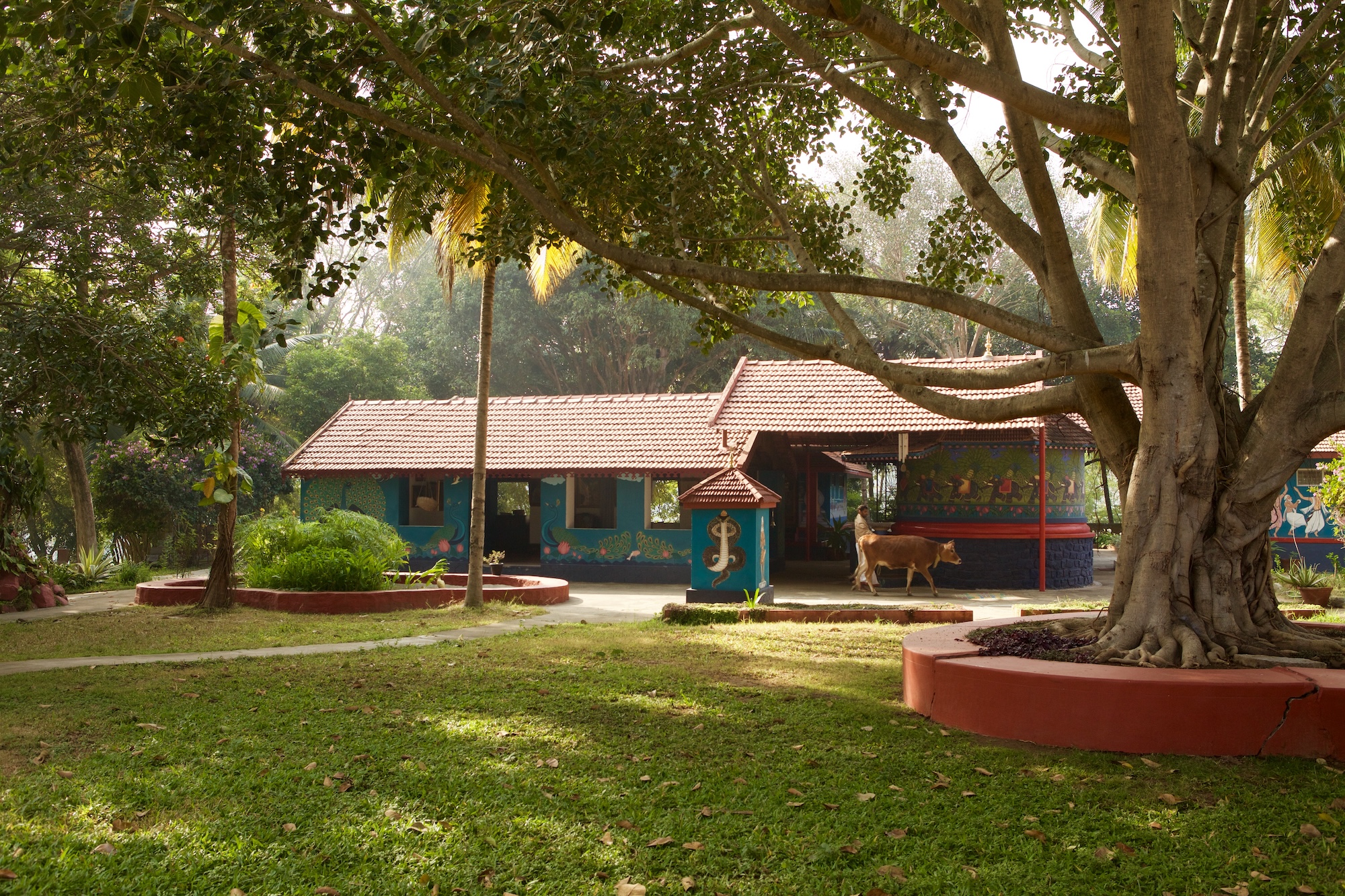
In Govindaji Gardens, a small spiritual oasis deep in the green pastoral fields of South India on the banks of the Holy River Kaveri, Narasingha Maharaja felt most at home, spending his final moments here in worship of his beloved Shri Shri Gaura Radha Madhava Deities and his close associates and disciples.
Eternal Devotion
We pray that our words will enhance, encourage and enliven your spiritual journey. The fathomless depths of maya and its endlessly mutable attractions are mere tests of our devotion. To cross beyond its glittering faces we need only remain absorbed in our devotional practices. Simple in theory, more difficult in practice, yet the practice is guaranteed by Krishna Himself in innumerable sastric verses. Pratijane priyo’si me — I promise because you are my very dear friend. (Bg 18.65), moksayisyami ma sucah — I will deliver you. Do not fear. (Bg 18.66), mam eva ye prapadyante mayam etam taranti te — Those who have surrendered unto Me can easily cross beyond My maya. (Bg 7.14).na ca tasmān manuṣyeṣu kaścin me priya-kṛttamaḥ — There is no servant in this world more dear to Me than he. (Bg 18.69). This is only a small sampling of the multitude of promises made to sincere bhaktas. We need only show our sincerity and surrender.
